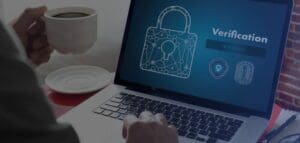By the time the Financial Crime Enforcement Network’s (FinCEN’s) Customer Due Diligence (CDD) Rule came into effect on May 11, 2018, most financial institutions already had long-standing policies and procedures in place with respect to much of the Rule’s requirements.
However, the requirement to identify the beneficial owners of legal entity customers was a dramatic change in policy and procedure with respect to onboarding and ongoing monitoring of legal entity customers and was one of the challenges presented in the implementation.
During Part 2 of this webinar, the following topics are covered:
- Storing, managing, and maintaining beneficial ownership data
- Opportunities for enhanced transaction monitoring and customer risk assessment from beneficial ownership data
- Documentation: The key to regulatory compliance
Missed Part 1? Here is a link to the recording Part 1: Enhance Implementation of BO Requirement for CDD where Laurie Kelly, CAMS explores how to:
- Identifying beneficial ownership, including the legal entity
- How to collect, store, manage and maintain beneficial ownership information
- Identity verification for beneficial owners
Q&A On CDD’s Beneficial Ownership Rule
Q: You mentioned types of “trigger events” that would prompt the bank to get an updated beneficial ownership form. Can you provide some specific examples of these kinds of events?
A: Yes. This will be very much dependent on each bank’s unique customer base and the types of legal entities they bank, I can suggest a couple of triggers. My bank’s clientele were SOLELY legal entities – we had all commercial customers – no consumer or individual accounts, other than sole proprietorships.
One type of event that occurred quite often was mergers between two customers, or between the customer and another unrelated legal entity. This is always a prompt to re-certify beneficial owners, because it’s almost a given that ownership – and the control prong – have new people in them. Another trigger event we implemented at my bank was the customer loan renewal process.
Most of our customers had revolving lines of credit that renewed every five years. So even though FinCEN no longer considers this renewal to be a “new account” we decided this was a good time to ask the customer for an updated Beneficial Ownership form, since they were already completing other renewal paperwork and we could just put it in with the renewal packet. Finally, we trained and relied on our relationship managers, who have close working relationships with their customers, to recognize and report when ownership or control prong changes occurred, and get a new form.
Q: Did you personally find a lot of commercial clients who were indirectly related by beneficial owners, and how did you deal with that?
A: I did see that quite extensively. As I said, all my bank’s customers were legal entities. Although many of them were cooperatives – where every member gets one vote regardless of their proportionate ownership in the entity, and so there’s no one person who controls 25 percent or more – many other legal entity customers were closely held businesses. And despite being closely held, I commonly saw multiple layers of holding companies shielding a handful of individuals at the very top.
Even before the CDD Rule went into effect, we were examining beneficial ownership as part of our customer due diligence. But we didn’t have a way to pull everything together until now, with beneficial ownership data stored in our systems.
Q: Did you ever file a suspicious activity report (SAR) based on what you saw with beneficial ownership data?
A: Well yes, but of course, I can’t get into specifics. One example was some rather suspicious set of business trusts that we couldn’t ascertain any real legitimate business purpose for – most likely it was tax evasion – that was our guess anyway, so we filed a report.
Q: How would you know if a beneficial owner was a nominee shareholder?
A: Good question – and my best answer is to dig into this person’s identity and do a background check. If he or she appears to be someone who couldn’t possibly be related to the business at all – based on age, occupation, employment status (or lack thereof) and residence – then there is a pretty good chance they are a nominee.
When you are dealing with a nominee, chances are pretty good that the physical address of the legal entity is that of a corporate formation agent’s office. Google that address, and if dozens of companies come up that’s quite likely the case. This is especially true with foreign entities domiciled in the UK and Latin America. Panama especially was notorious for the use of nominees.
Q: Would you find that you had many beneficial owners with the same address?
A: Not necessarily because the beneficial owners are individuals. But you would want to be cognizant of the address of the legal entity itself. If the beneficial owners, their personal address, matches up with the legal entity’s address, then that is another big red flag because they are not providing their actual personal home address.
Q: I am an intermediary regulated by FinCEN and sometimes buyers or sellers don’t want to share passport information with me. How do I get the right information?
A: If you are the institution that holds the account, and it is a legal entity customer, they are required by federal law to provide you with the beneficial owner’s personal information and if they refuse to do so I guess your next step is to refuse to open an account.
What I found in the initial months after implementing the CDD Rule was you get the foot-stomping, “Well I’ll just take my business to another bank.” Well, they are just going to get the same issue at any bank they go to. Any type of government-issued photo identification with an expiration date is acceptable, so a driver’s license or photo identification issued by the state is acceptable in lieu of a passport.
Here is the recording for Part 1 of the webinar. For more information check out our answers to frequently asked questions about FinCEN’s requirements for beneficial ownership.
Alessa is an anti-money laundering (AML) software that allows companies to automate and verify information provided during the onboarding stage. To learn more about Alessa, please contact us.
Access Webinar
Learn about opportunities for enhanced transaction monitoring and customer risk assessment from beneficial ownership data


